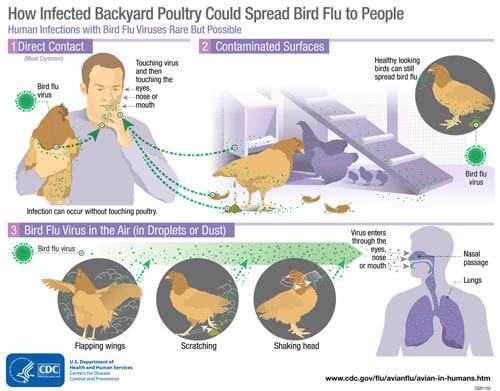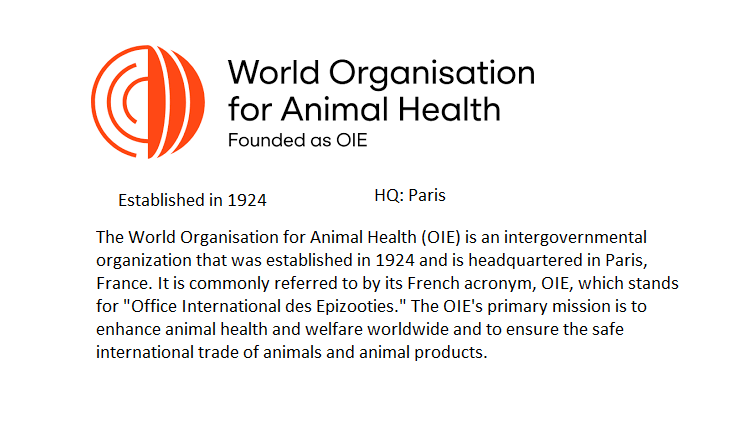World Organisation for Animal Health
World Organisation for Animal Health Approves Self Declaration of Freedom from Avian Influenza in Indian Poultry Compartments.
The World Organisation for Animal Health (WOAH)
The World Organisation for Animal Health (WOAH) is an intergovernmental organization that was established in 1924 and is headquartered in Paris, France. It is commonly referred to by its French acronym, OIE, which stands for “Office International des Epizooties.” The OIE’s primary mission is to enhance animal health and welfare worldwide and to ensure the safe international trade of animals and animal products.
WOAH is recognized as a reference organisation by the World Trade Organization (WTO) and in 2022 counted a total of 182 member states. Its newest member state is Saint Lucia. WOAH maintains permanent relations with 45 other international and regional organisations and has Regional and sub-regional Offices on every continent.
WOAH is not a part of the UN system. Its autonomy is both institutional and financial and its activities are governed by its own constitutional texts.
The OIE’s activities include the following:
1. Setting international standards:
The organization develops and updates international standards and guidelines for the control and prevention of various animal diseases. These standards help member countries establish measures to protect animal health and facilitate the safe trade of animals and animal products.
2. Information exchange:
The OIE serves as a global reference point for information on animal diseases, providing a platform for member countries to share information on disease outbreaks and surveillance.
3. Capacity building:
The OIE supports member countries in building their capacity to manage and control animal diseases. This includes training programs, technical assistance, and the establishment of veterinary services.
4. Veterinary education and research:
The organization promotes research and education in the field of animal health and veterinary sciences to improve the understanding and management of animal diseases.
5. Emergency response:
The OIE assists member countries in managing and responding to animal disease outbreaks, including providing guidance on disease control measures and crisis management.
6. International cooperation:
The OIE collaborates with other international organizations, such as the World Health Organization (WHO) and the Food and Agriculture Organization (FAO) of the United Nations, to address global health and food safety issues.
World Animal Health Information Database (WAHID) interface
Timely dissemination of information is crucial to containing outbreaks. The WAHID Interface provides access to all data held within WOAH’s new World Animal Health Information System (WAHIS).
It replaces and significantly extends the former web interface named Handistatus II System.
A comprehensive range of information is available from:
- Immediate notifications and follow-up reports submitted by member countries in response to exceptional disease events occurring in these countries as well as follow-up reports about these events
- Six-monthly reports describing the WOAH-listed disease situations in each country
- Annual reports providing further background information on animal health, on laboratory and vaccine production facilities
Avian influenza
Avian influenza, commonly known as bird flu, is a highly contagious viral disease that primarily affects birds, especially poultry like chickens and ducks. It can also infect other bird species, including wild birds, and occasionally, it can be transmitted to humans. Avian influenza is caused by influenza A viruses, and several subtypes of these viruses have been identified.
Here are some key points about avian influenza:
1. Transmission:
Avian influenza viruses can spread through direct contact with infected birds or their feces, contaminated equipment, and contaminated environments. They can also be transmitted by migratory birds that carry the virus.
2. Strains:
There are various strains of avian influenza viruses, including low-pathogenic (LPAI) and highly-pathogenic (HPAI) strains. HPAI strains are more severe and can cause high mortality rates in birds.
3. Human Infections:
While avian influenza primarily affects birds, some subtypes have the potential to infect humans. H5N1, H7N9, and H9N2 are examples of subtypes that have caused human infections. These cases are often associated with close contact with infected birds.
4.Symptoms in Birds:
In infected birds, symptoms can vary widely. They may include respiratory signs, drop in egg production, swelling of the head, neck, and eyes, and high mortality rates in severe cases.
5. Human Symptoms:
In humans, avian influenza can cause a wide range of symptoms, from mild to severe, including fever, cough, sore throat, and, in severe cases, pneumonia, respiratory failure, and death. Human infections are relatively rare but can be severe.
6. Prevention and Control:
Preventing avian influenza outbreaks involves strict biosecurity measures on farms, surveillance, and early detection. Vaccination of poultry may also be used in some cases. In areas with human infections, public health measures are taken to prevent the spread to humans, including isolation and treatment of affected individuals.

7. Global Monitoring:
International organizations like the World Health Organization (WHO) and the World Organisation for Animal Health (OIE) monitor and coordinate responses to avian influenza outbreaks. They work to prevent and control the spread of the disease and provide guidelines for surveillance and control.
It’s important to note that not all avian influenza viruses are of equal concern to human health, and the risk of transmission to humans varies among subtypes. Nevertheless, vigilance, early detection, and control measures are crucial to prevent outbreaks and potential public health risks associated with avian influenza.
SOURCE: WOAH



